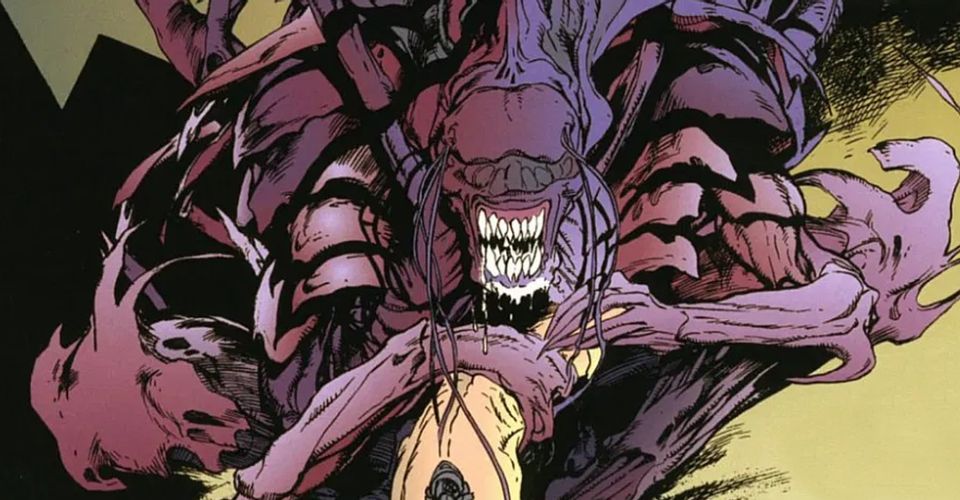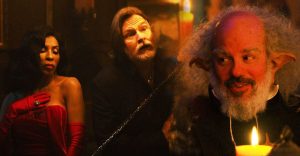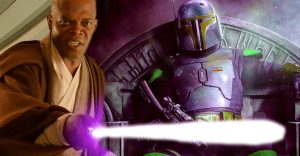Alien: Rogue’s Xenomorph King Explained

Disney has recently acquired the rights to the Alien and Predator franchises, which came with their massive purchase of 20th Century Fox and all of their properties in 2019. As such, Marvel Comics now have the comic rights and they will soon release brand new Alien, Predator, and Alien vs. Predator comics. However, Dark Horse Comics was the franchise’s previous comics publisher, and they created some amazing narratives and additions to the Xenoverse over the span of almost 35 years. One story in particular was especially notable, as it introduced the fearsome and intriguing rogue male iteration of the xenomorph alien species, which was dubbed the Xenomorph King.
Dark Horse’s 1993 4-issue miniseries Aliens: Rogue came from writer Ian Edginton with art by William Simpson. In the dark and intense story, a corporate spy known as John Kray was working on behalf of the Grant Corporation, who wanted access to the research and experiments of one Professor Ernst Kleist. Kleist was working for the rival Z.C.T Corporation on Charon Base, a deep space research facility focused on Project Chimera. As Kray soon learns, Kleist is quite mad and his research is incredibly dangerous, as it involves the genetic modification and manipulation of the deadly xenomorph species. While Kleist had already succeeded in creating tame and somewhat domesticated xenomorphs, his true goals are loftier and seemingly unattainable. What he truly wants is to create his own artificial Xenomorph Queen, though he has been suffering extensive failures.
This all changes when Kray’s deception and true intentions of corporate espionage are discovered. Receiving a stroke of inspiration, Kleist takes samples of the captured Kray’s DNA, and hybridizes it with that of a xenomorph. The result is a truly fearsome abomination: the Xenomorph King. A purely artificial combination of man and xenomorph, the King did not carry the same ruthless and aggressive tendencies towards humans as natural xenomorphs or Xenomorph Queens. It simply did not see them as prey or a threat, seemingly unaware of their value to the xenomorph’s breeding process. However, it did see other xenomorphs as a threat, brutally mauling those that the professor put in its containment unit.

The Professor also believed that the King could be bio-programmed with his own commands, which would no doubt make it extremely valuable to the company. However, the presence of a King so close to where Charon Base was holding a Queen in captivity led to a primal challenge, resulting in the King breaking containment and wreaking absolute havoc across the base. While it only killed humans that got in its way, the King soon battled and killed all of the Queen’s elite guard xenomorphs before meeting the Queen herself in a duel for ultimate predatory supremacy.
Unfortunately, the King did not last long against the Queen, who emerged victorious as the superior species, proving nature’s dominance over the rogue male’s manufactured and artificial nature. In his anguish over the King’s defeat, Kleist unleashed a sound canon on the Queen until the device went critical, destroying the entirety of Charon Base with only a handful of human survivors making it out alive by the miniseries’ end, rendering the Xenomorph King the only one in existence.
While the Xenomorph King’s existence was short-lived, Marvel Comics now has an opportunity to expand on this concept if they so choose. Kleist never did get the chance to try and bio-program his King. His theory was that if he could command the King, the King could in turn command other xenomorphs in humankind’s favor. While its aggression towards its own species as a rogue male threw a massive wrench into those plans, perhaps a new story and take on a Xenomorph King could see that aggression modified to better suit a corporation’s needs. Anything is possible as the Alien franchise’s Xenoverse enters a whole new era under Marvel Comics.
About The Author


















